12 “Healthy” Foods That Actually Aren’t That Healthy
.webp)
Key Takeways
Making sure you’re following a healthy diet has gotten more confusing in recent years. Companies often employ clever labeling and marketing strategies to target health-conscious consumers, using terms like low-fat, gluten-free, and low-carb to attract attention.
While these labels may sound like healthier options, some of these products may contain hidden ingredients. Whether it’s due to added sugars, artificial additives, or misleading labeling, not all of these foods may be as “healthy” as you are sometimes led to believe.
With that in mind, let’s explore 12 popular foods that are less healthy than you may think, and offer some healthier substitutes to these less-nutritious options.
1) Pre-Made Smoothies

Pre-made smoothies are bottled beverages that claim to offer a quick and easy way to consume a variety of fruits and vegetables. Unfortunately, the reality is that similarly to fruit juices, pre-made smoothies are often high in sugars, artificial flavors, and preservatives.
They’re often very low in protein as well, which is an important macronutrient that helps to stabilize blood sugar. Instead, a healthier alternative to pre-made smoothies is making your own protein-rich, lower-sugar, homemade versions.
By using fresh, whole fruits and vegetables, you have control over the quality and quantity of ingredients. You can create nutrient-dense smoothies with lower sugar, and incorporating ingredients like leafy greens, berries, nuts, seeds, or even protein powder can make your homemade smoothies even more nutritious.
2) Granola Bars

Granola bars are a popular snack often made from rolled oats, nuts, seeds, dried fruits, and sweeteners like honey or sugar. Because oats are often associated with heart health and fiber content, granola bars may seem like a healthy option.
However, many granola bars contain high amounts of added sugars and unhealthy fats. The sweeteners used, such as honey, agave syrup, or cane sugar, significantly increase the added sugar content. The ingredient list of many bars may even include hydrogenated oils or poorer quality fats.
For a healthier alternative to store-bought granola bars, try some healthier snack bar alternatives such as the ones we list in our article on snack bars.
3) Veggie Chips
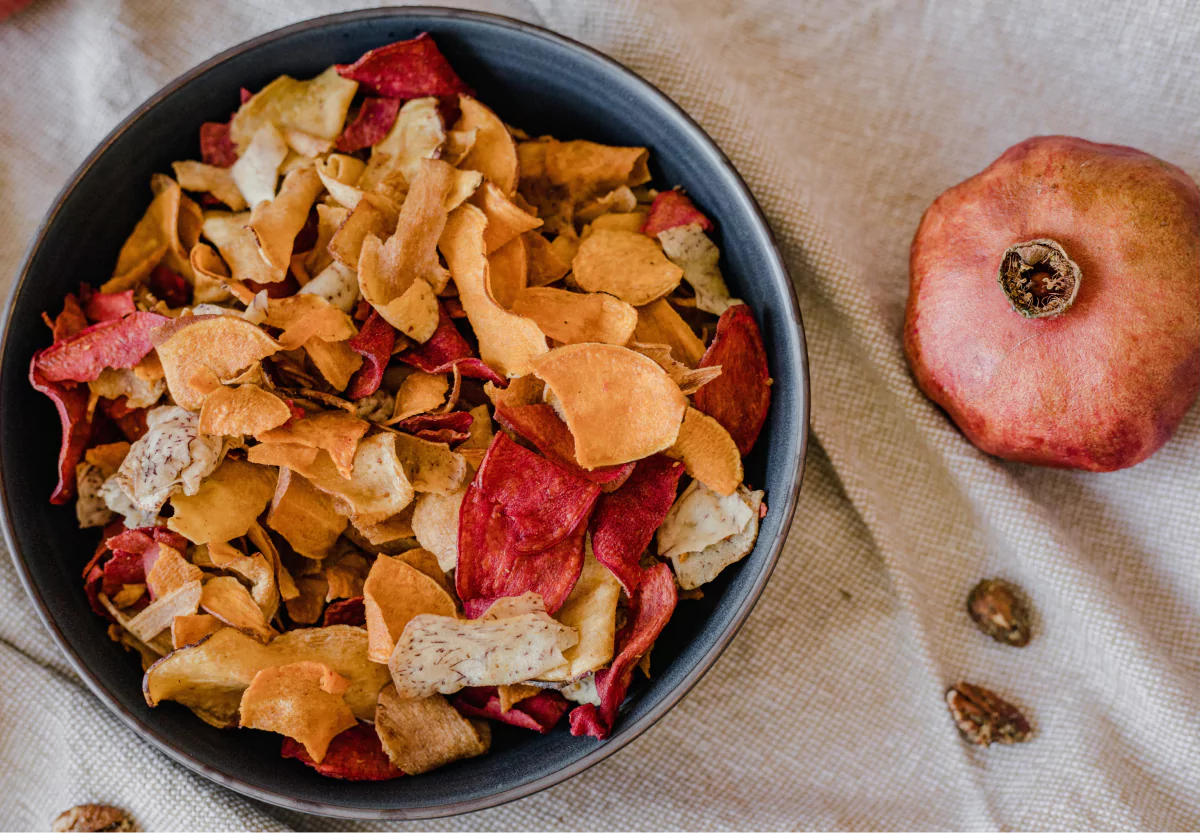
Veggie chips are an alternative to traditional potato chips, made from vegetables like beets, sweet potatoes, or kale. The veggies are thinly sliced and baked or fried until crispy, and many people believe that veggie chips are a healthy snack choice because they are made from vegetables.
However, veggie chips are often deep-fried or baked with added poor quality oils, and may also contain added sugars and artificial flavorings. Some of them may still be higher in carbs and, when eaten alone without protein, could be more likely to spike your glucose. Instead, a healthier alternative to veggie chips is to make your own vegetable snacks at home.
You can opt for oven-baked or air-fried versions using minimal oil or no oil at all. Slicing vegetables like zucchini, carrots, or cucumbers into thin strips and seasoning them with herbs and spices can provide a satisfying crunch without the excess fat and oil.
4) Flavored or Sweetened Yogurt
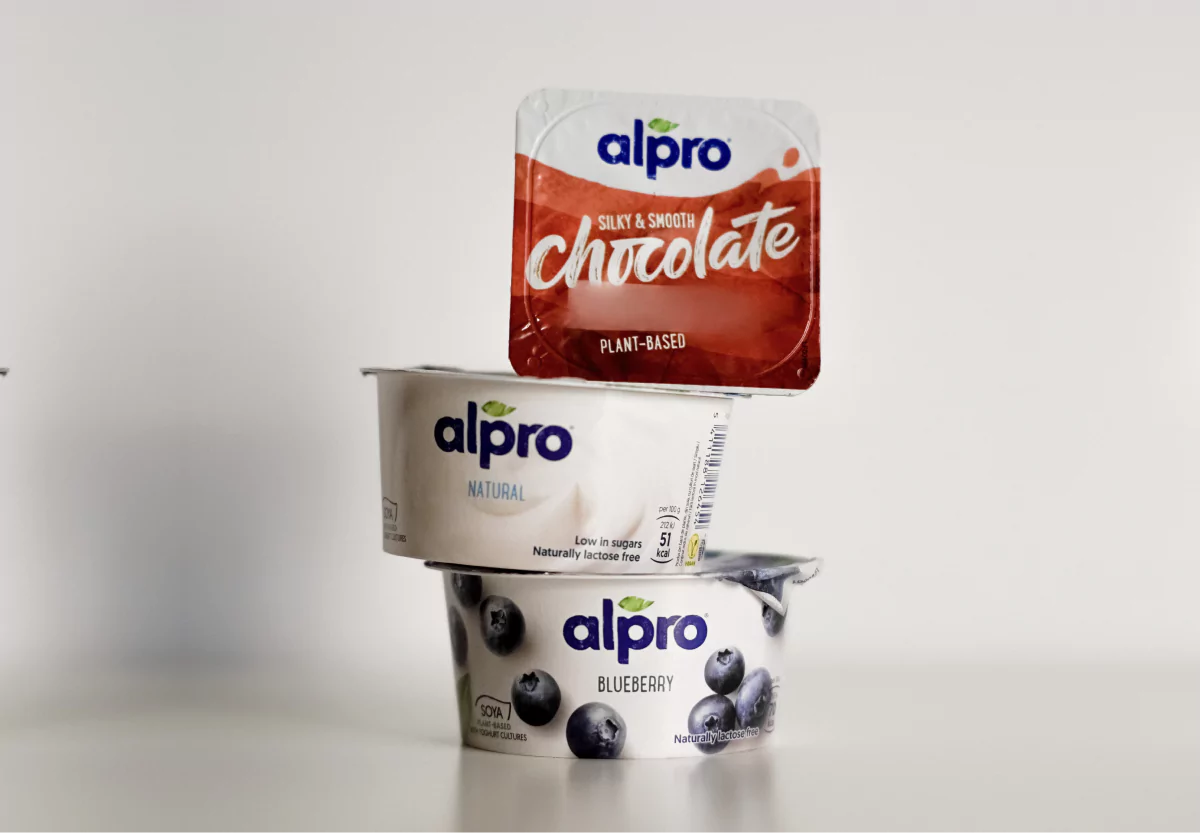
Flavored or sweetened yogurt refers to yogurt that has been sweetened with added sugars. Yogurt is generally recognized as a nutritious food because of its probiotic, calcium, and protein content, which can support digestive health and contribute to a well-rounded diet.
Unfortunately, the added sugars in flavored yogurts can undermine the health benefits. Instead, a healthier alternative to flavored or sweetened yogurt can be plain, unsweetened Greek yogurt.
You can sweeten yogurt naturally by adding a small amount of fresh fruits, such as berries, sliced bananas, or diced mangoes and enjoy the health benefits of yogurt while avoiding the pitfalls of too much added sugar or other additives.
5) Packaged Muffins

Packaged muffins are pre-packaged baked goods widely available in grocery and convenience stores. The marketing and packaging of these muffins often emphasizes certain features like whole grains, fruit fillings, or low-fat content, contributing to the perception of healthiness.
The reality is that packaged muffins often contain high amounts of added sugars, such as refined sugar or corn syrup, and unhealthy fats in the form of hydrogenated oils. A healthier alternative to packaged muffins is making your own homemade muffins.
This way, you have control over the ingredients and can make them with wholesome, nutritious ingredients. Use whole grain flours, such as whole wheat or oat flour, instead of refined white flour and incorporate smaller amounts of sweeteners with whole foods such as mashed bananas or applesauce with no added sugar.
6) Protein and Fiber Bars

Protein and fiber bars are pre-packaged snack bars that are marketed as a convenient source of necessary macronutrients. Many people consider these bars to be a healthy snack choice because of their protein and fiber content, and the truth is that some protein and fiber bars are actually healthy.
But not all protein and fiber bars are created equal, and many can be as high in added sugars, artificial sweeteners, and less whole food-based ingredients as a typical candy bar.
Aside from protein and fiber bars made with no added sugars or preservatives, nuts can be a good alternative to processed protein bars. Nuts are a good source of both protein and fiber. Almonds, pistachios, hazelnuts, peanuts, brazil nuts and pecans are all fiber- and protein-rich options.
7) Dried Fruit

Dried fruit is fresh fruit that’s been dehydrated to remove most of its water content. Popular examples include raisins, dried apricots, dried cranberries, and dried mango. Dried fruits are often associated with being a good source of certain vitamins, minerals, and fiber.
However, dried fruit tends to have a higher sugar content than fresh or frozen food, and often has preservatives and other additives. If you can’t resist it, dried fruit with no added sugar or other additives can be a better option when consumed in moderation, especially if you eat it with a source of protein, such as Greek yogurt.
If you prefer dried fruits to fresh because of the shelf life, frozen fruits are another great alternative. Research has even shown that frozen fruits have comparable, and sometimes even higher, nutritional content than fresh fruits.
8) Pretzels

Pretzels are a popular baked snack food traditionally made from flour, water, salt, and yeast. Pretzels may seem healthy because of their low fat content and simple ingredient list.
However, while they may be lower in fat, pretzels are primarily made from refined white flour, which is more likely to cause a rapid spike in blood sugar levels. Instead, try air-popped popcorn as a healthier alternative to pretzels.
Popcorn is a whole grain, and one serving provides about one-third of the whole grains most adults need. Pair with protein for even better blood sugar support.
9) Sports Drinks
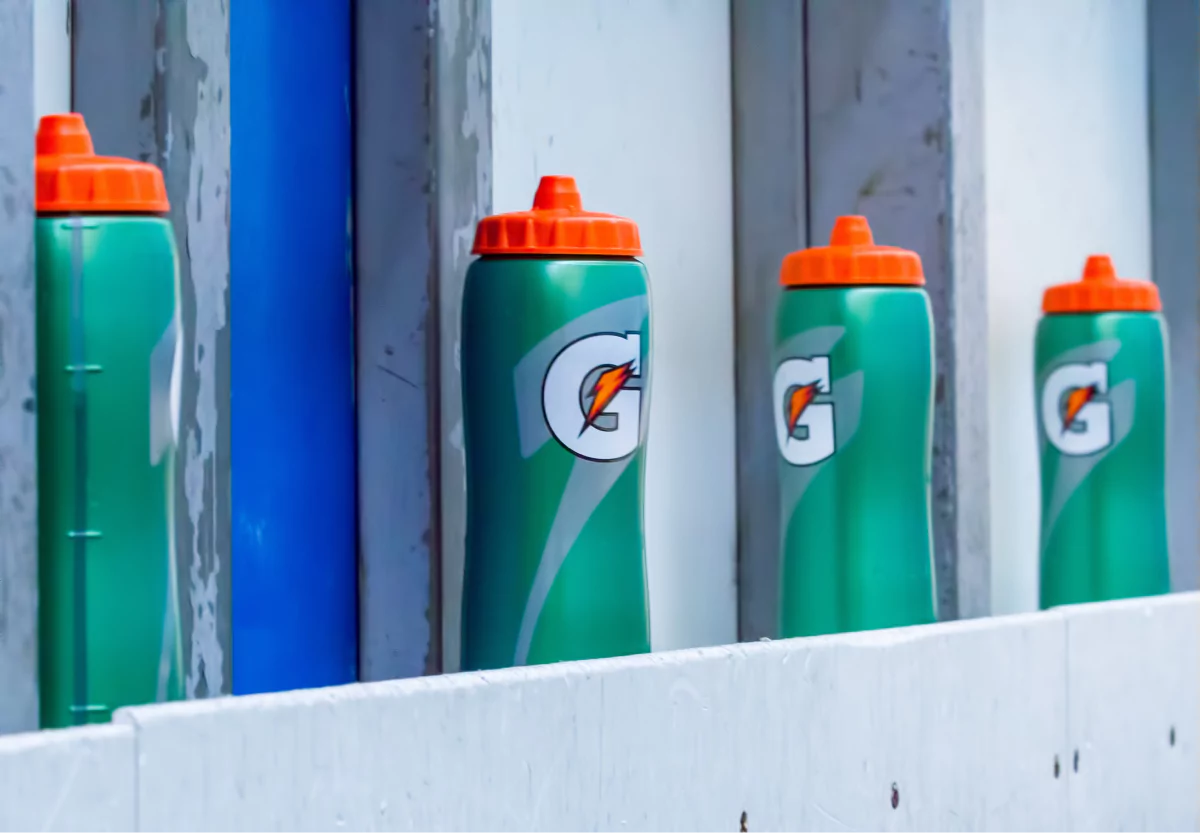
Sports drinks are beverages specifically formulated to replenish fluids, electrolytes, and carbohydrates during or after exercise. These drinks are marketed as providing hydration, energy, and electrolyte balance to support athletic performance.
Unfortunately, however, these drinks are often very high in added sugars. Unless you are participating in prolonged, intense exercise lasting over an hour, plain water is typically sufficient to hydrate and meet your fluid needs.
If you do engage in exercise or endurance activities, you can consider some of these electrolyte-rich options found in our electrolyte article. These strategies may provide the necessary electrolytes without as many added sugars and artificial additives found in commercial sports drinks.
10) Flavored Oatmeal
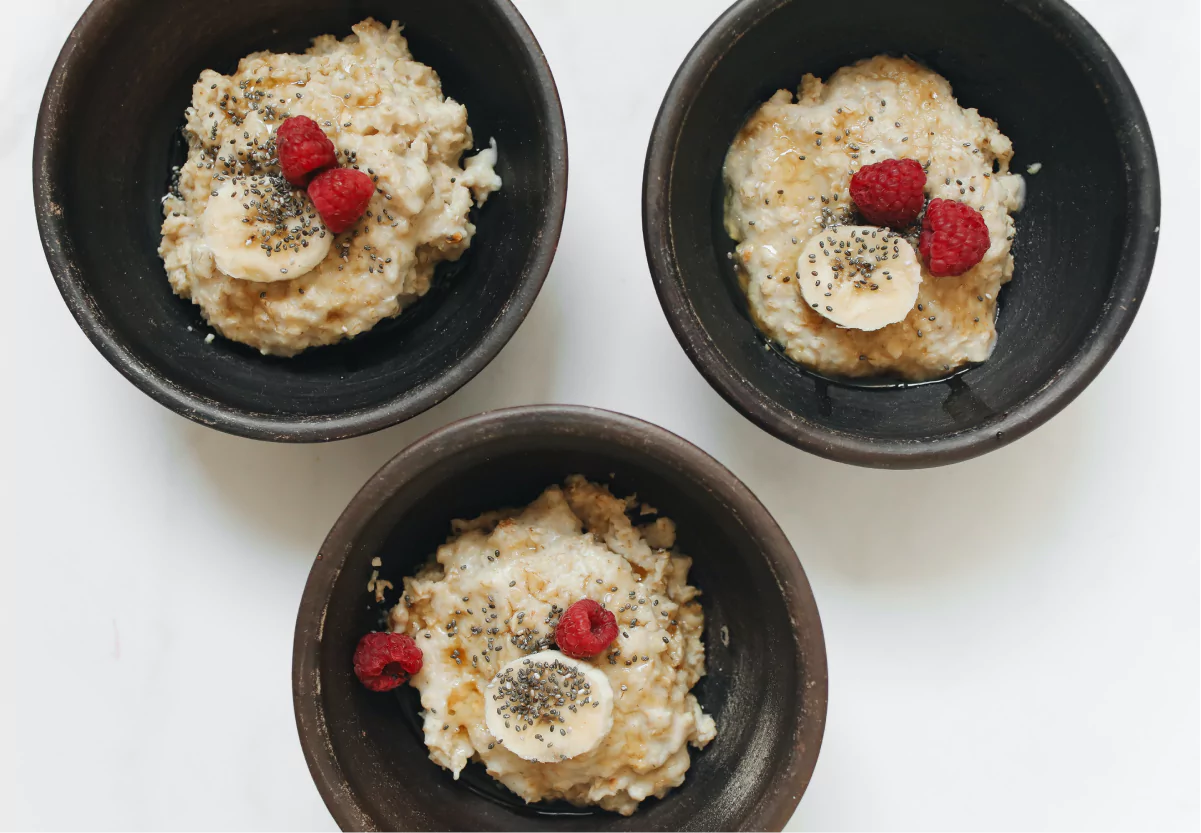
Flavored oatmeal, or pre-packaged instant oatmeal, comes in various flavors and typically contains instant oats, sweeteners, and flavorings. Many people perceive flavored oatmeal as a healthy breakfast because oatmeal is known for its high fiber content.
However, the flavored varieties often contain high amounts of added sugars, artificial sweeteners, and artificial flavors. Instead, a healthier alternative to flavored oatmeal is to prepare your own oatmeal using plain rolled or steel-cut oats, and adding your own natural flavorings.
Sweeten your oatmeal naturally with small amounts of fresh fruits, such as sliced bananas or berries, and enhance the flavor with spices like cinnamon or nutmeg. You might even like to add a dash of alcohol-free vanilla extract.
11) Low-Fat or Fat-Free Salad Dressings

Low-fat or fat-free salad dressing are often marketed as healthier alternatives for those seeking to reduce their fat intake or manage their weight. However, to compensate for the reduced fat, these dressings often use additives and artificial ingredients to mimic the texture and taste of full-fat dressings.
Manufacturers often add increased amounts of sugar, artificial sweeteners, or sodium to enhance the taste. These additives can negatively impact blood sugar levels and contribute to increased calorie intake.
A healthier alternative to low-fat or fat-free salad dressings is to opt for homemade dressings using natural, nutrient-rich ingredients. Make your own dressings using ingredients like extra-virgin olive oil, vinegar, lemon juice, herbs, and spices. You can find some recipe inspiration here.
12) Trail Mix
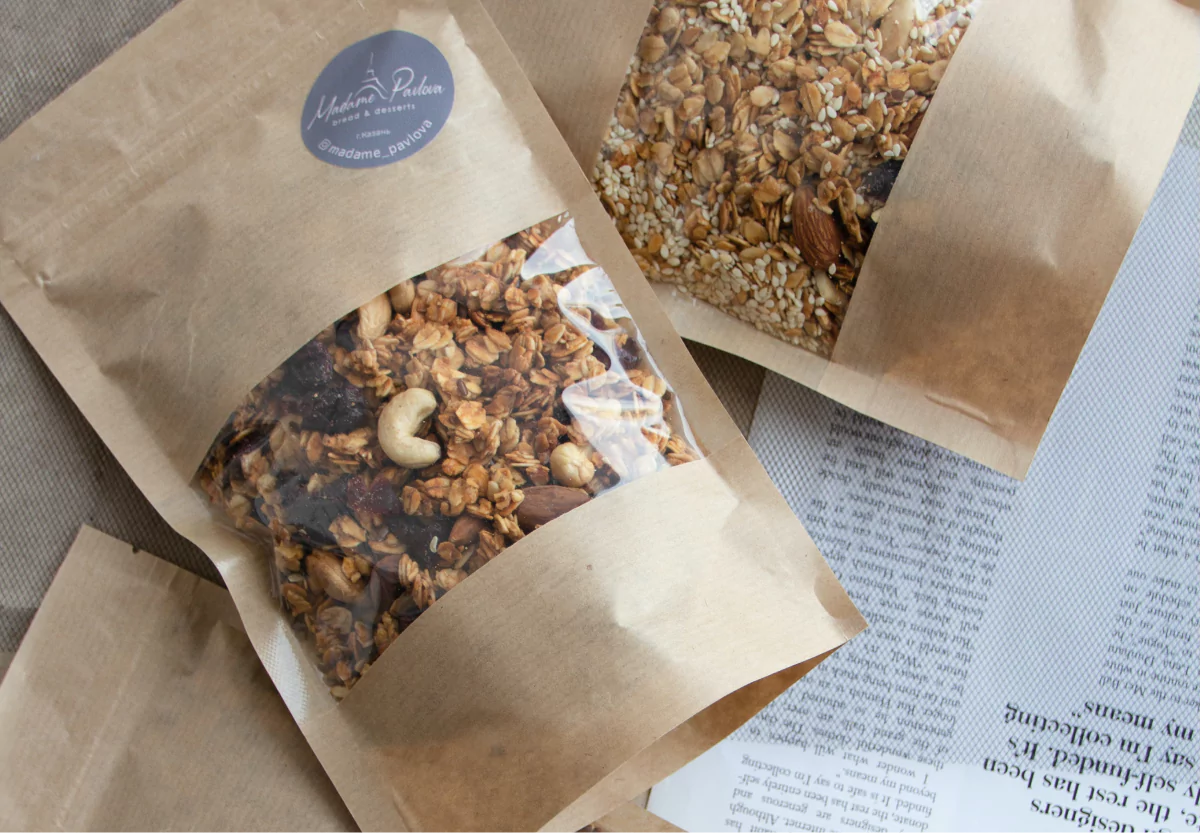
Trail mix is a popular snack that typically consists of a mixture of nuts, dried fruits, seeds, and sometimes additional ingredients like chocolate chips, pretzels, or granola. Many people consider trail mix to be a healthy snack choice due to its inclusion of nuts, seeds, and dried fruits.
But commercially available trail mix can be high in calories, added sugars, unhealthy fats, and sodium. The inclusion of chocolate, sweetened dried fruits, or sugary coatings on certain ingredients can significantly increase the sugar and calorie content.
A healthier alternative to traditional trail mix is to make your own mix at home. Start with a base of unsalted nuts and seeds like almonds, walnuts, sunflower seeds, or pumpkin seeds. Add in dried fruits like unsweetened cranberries, apricots, or raisins for natural sweetness.
This way, you have control over the ingredients and can avoid excessive sugars, unhealthy fats, and unnecessary additives.
Tips for Building a Healthy Diet

Building a truly healthy diet involves a well-rounded and balanced approach to nutrition. Here are some tips:
- Incorporate a diverse range of foods into your diet: Include things like fruits, vegetables, whole grains, lean proteins, and healthy fats into your meals. Each food group provides essential nutrients, vitamins, and minerals that contribute to overall health.
- Choose foods that are nutrient-rich: These are whole foods that provide a high amount of essential nutrients relative to their calorie content. Examples include leafy greens, colorful fruits and vegetables, legumes, nuts, seeds, and other lean proteins.
- Replace refined grains with whole grains: Think brown rice, quinoa, whole wheat, and oats. Whole grains are higher in fiber and offer more nutrients compared to their refined counterparts. They’re also typically more supportive of balanced glucose levels compared to refined options.
- Eat plenty of lean protein: Things like poultry, fish, beans, lentils, and tofu can all be great options. Protein is essential for tissue repair, muscle growth, stable glucose levels, and so much more.
- Incorporate sources of healthy fats: This includes avocados, nuts, seeds, olive oil, and fatty fish. These fats provide important monounsaturated fats and omega-3 fatty acids and support heart health.
- Monitor your blood sugar levels: This can help you better manage your dietary choices and allow you to tailor your meal plan to keep your blood sugar stable throughout the day. Monitoring your blood glucose levels can help you make informed decisions about your food choices and lifestyle habits.
Find the right Nutrisense programto turn insight into progress.
Go Beyond Glucose Data with Nutrisense
Your glucose can significantly impact how your body feels and functions. That’s why stable levels are an important factor in supporting overall wellbeing. But viewing glucose isn't enough. Nutrisense, you’ll be able to learn how to use your body's data to make informed lifestyle choices that support healthy living.
One-to-one coaching
Sign up to access insurance-covered video calls to work with a glucose expert: a personal registered dietitian or certified nutritionist who will help tailor your lifestyle and diet to your goals.
Monitor and measure what matters
With the Nutrisense CGM Program, you can monitor your glucose with health tech like glucose biosensors and continuous glucose monitor (CGM)s, and analyze the trends over time with the Nutrisense App. This will help you make the most informed choices about the foods you consume and their impact on your health.
Find your best fit
Ready to take the first step? Start with our quiz to find the right Nutrisense program to help you take control.

Heather is a Registered and Licensed Dietitian Nutritionist (RDN, LDN), subject matter expert, and technical writer, with a master's degree in nutrition science from Bastyr University. She has a specialty in neuroendocrinology and has been working in the field of nutrition—including nutrition research, education, medical writing, and clinical integrative and functional nutrition—for over 15 years.




